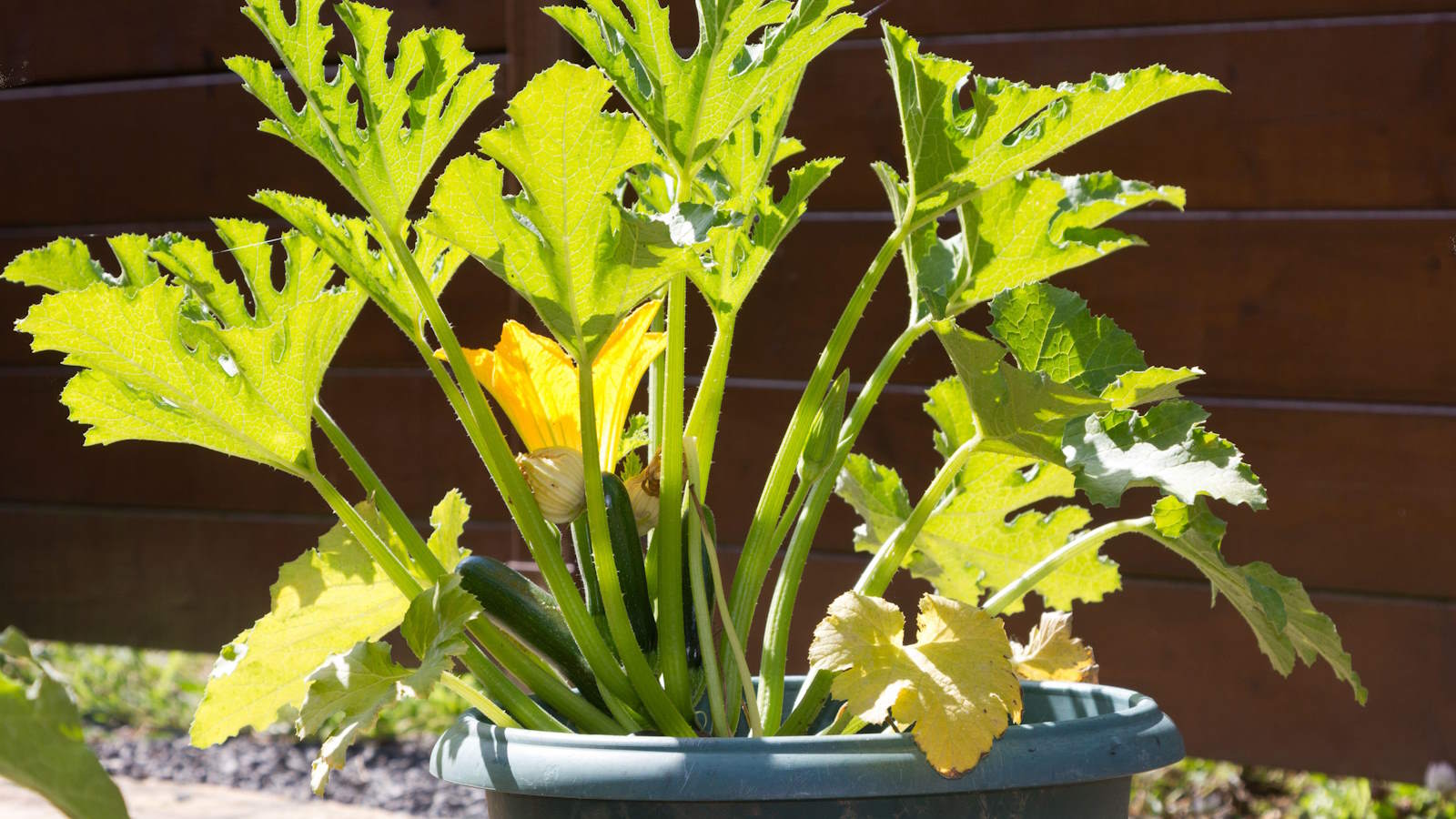
Zucchini are incredibly productive plants and you can get all the fruits you need each year from only one plant. That makes them ideal candidates to grow in containers. So, how simple is it to grow zucchini in a container?
The plants can take up quite a bit of space, reaching two feet in height and spread. So if you are short of space, a zucchini plant in a pot can be a great option to get a crop on a deck or balcony.
For success with growing zucchini in containers, the variety of zucchini and the pot size will be factors to success - along with regularly watering and feeding your plants as they grow.
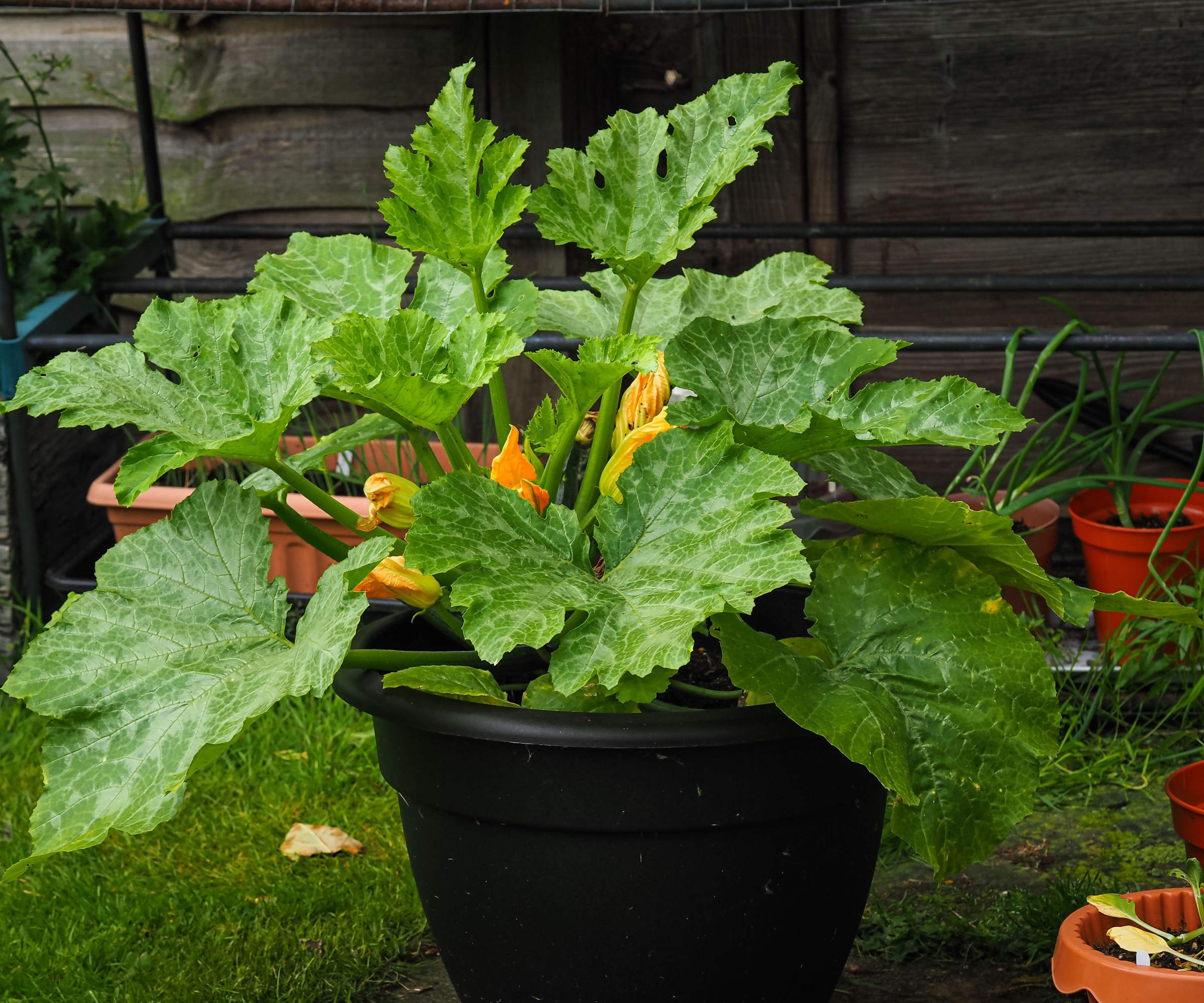
How to plant zucchini in pots
If you are planning to grow zucchini in pots, you can buy young plants or plant zucchini seeds to grow your own. There are options to sow seeds indoors early in a greenhouse to get a head start to the season or plant them directly into the chosen pot outdoors after your last frost. Whether you buy or sow, let's look at 6 key factors to help you get a great crop of zucchini from plants in containers.
1. Choose the best variety
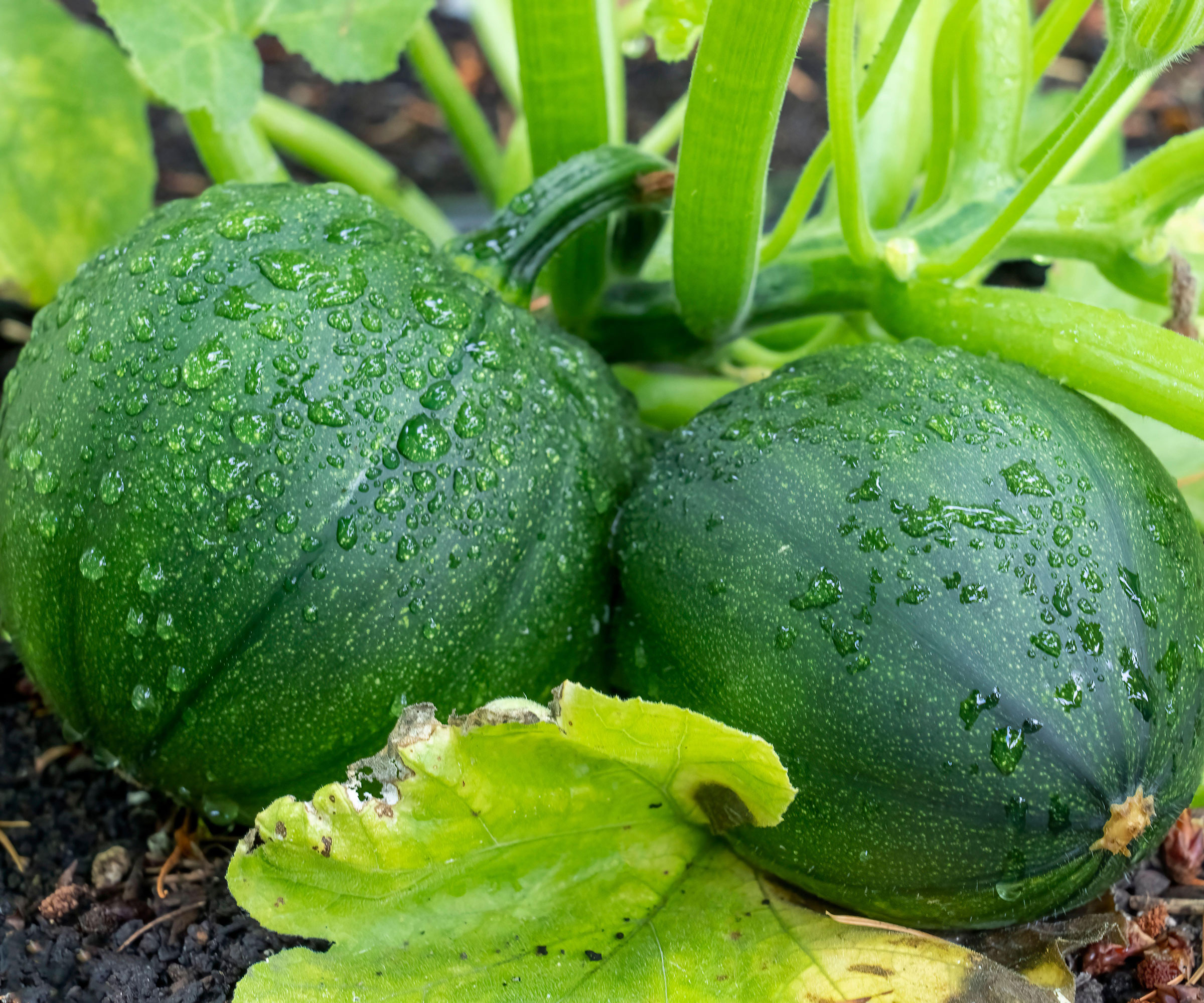
There are lots of varieties of zucchini to grow. Plants come in bush and vining types, with the bush varieties more compact-growing and more ideally suited to growing zucchini in pots. Such types fruit from a central point, while vining types spread and produce fruits along the vine. Vining types of courgette can still grow in pots, but will need training and support as they spread.
Susan Mulvihill, author of ‘The Vegetable Garden Problem Solver Handbook’ recommends 'Bush Baby' and 'Astia' as two varieties that do well in pots. When ordering seeds, look for zucchini varieties with terms such as ‘bush’ or ‘patio’ in the name, as they will be better types for growing as part of a vegetable container garden.
If you choose a vining type and want to grow zucchini vertically, it will need a support, trellis, or cage. Putting a stake or support into the pot will help to support the vine.
Discover the range of zucchini seeds available at Burpee
2. Pick a large pot
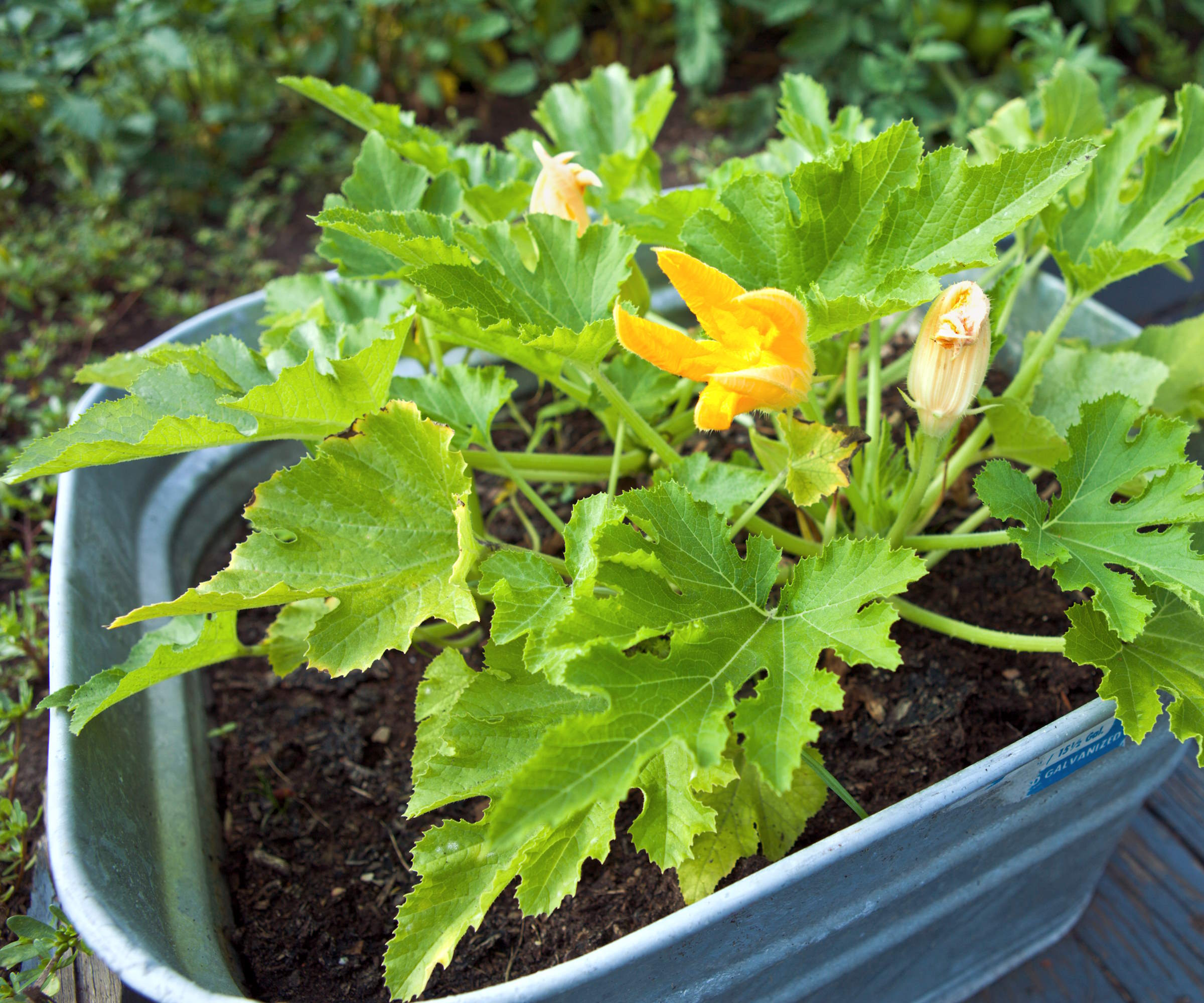
Zucchini plants have large roots that can reach up to 18-24" deep, so any container needs to be large enough to accommodate them. However, while the more compact bush varieties will not put out as deep roots they still need a large pot to thrive in.
Susan Mulvihill advises that ‘the recommended container size for summer squash is 5 to 10 gallons so the plants and roots will have plenty of room.’ A container must be at least 18 inches wide and 16 inches deep.
They can be made of many different materials, including plastic, terracotta, ceramic, or even fabric grow bags, such as these grow bags at Amazon, but must feature holes in the bottom for drainage, as zucchini plants will struggle if they grow in water-logged soil.
The pot should be filled with fresh organic potting compost. This is always the best soil for container gardening, rather than old garden soil or reused potting soil from other containers.
An organic soil for plants and vegetables that is a rich blend of sphagnum peat moss, humus and perlite enriched with earthworm castings, alfalfa meal, kelp meal and feather meal. A potting soil for outdoor plants and a great soil mix for vegetables, herbs and all other container plants and flowers.
3. Give the plants lots of sun
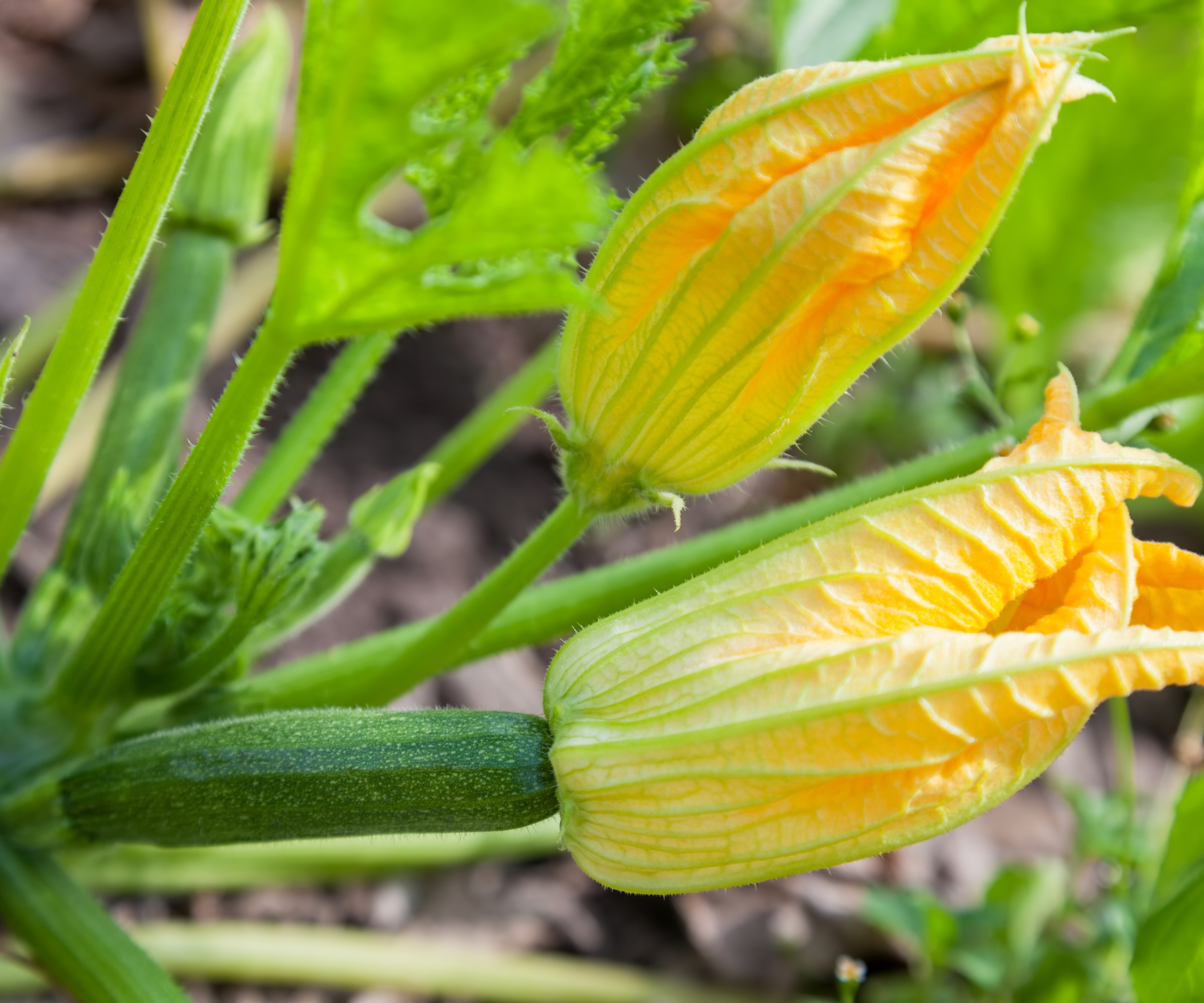
Zucchini plants want to grow in a sunny location, so put your pot in a backyard spot that sees at least eight hours of sunlight a day. Avoid any position that is shaded by walls or buildings for large parts of the day.
The spot also wants to be sheltered and ideally close to a water source - this is beneficial as zucchini do need lots of watering during the season, and it will help as you will not need to lug heavy watering cans too far.
4. Water regularly
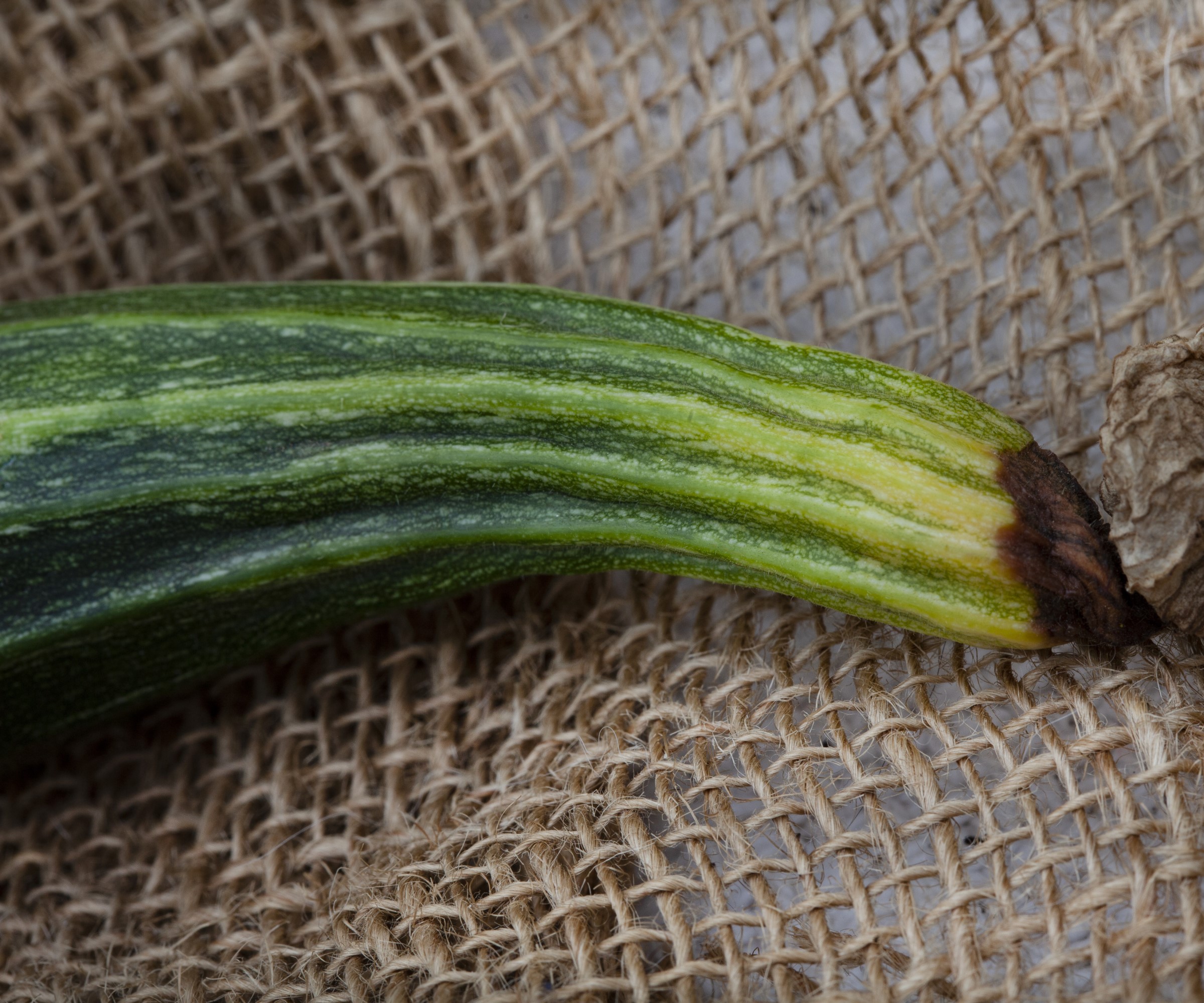
Zucchini plants are hungry and will want a lot of watering in containers. The soil in pots dries out faster than the soil in the garden, so any crops in pots need to be watered more often.
Kate Russell, author of ‘Stop Wasting Your Yard’, says monitoring moisture levels is vital to success when growing zucchini in containers. She explains: ‘They need lots of water, but you don't want the soil to be soggy. Sporadic watering and insufficient calcium can cause blossom end rot in zucchini.’
How you water plants, along with spotting when to water plants, is also important to maintain the health of plants. Kate Russell warns ‘overhead watering can cause powdery mildew, downy mildews, and white mold’, so always water the base of the plant rather than the foliage.
Using drip irrigation, soaker hoses, or self-watering planters - such as this 20-inch self-watering pot available at Walmart - can help reduce the risk of fungal diseases when watering plants in containers.
5. Fertilize plants
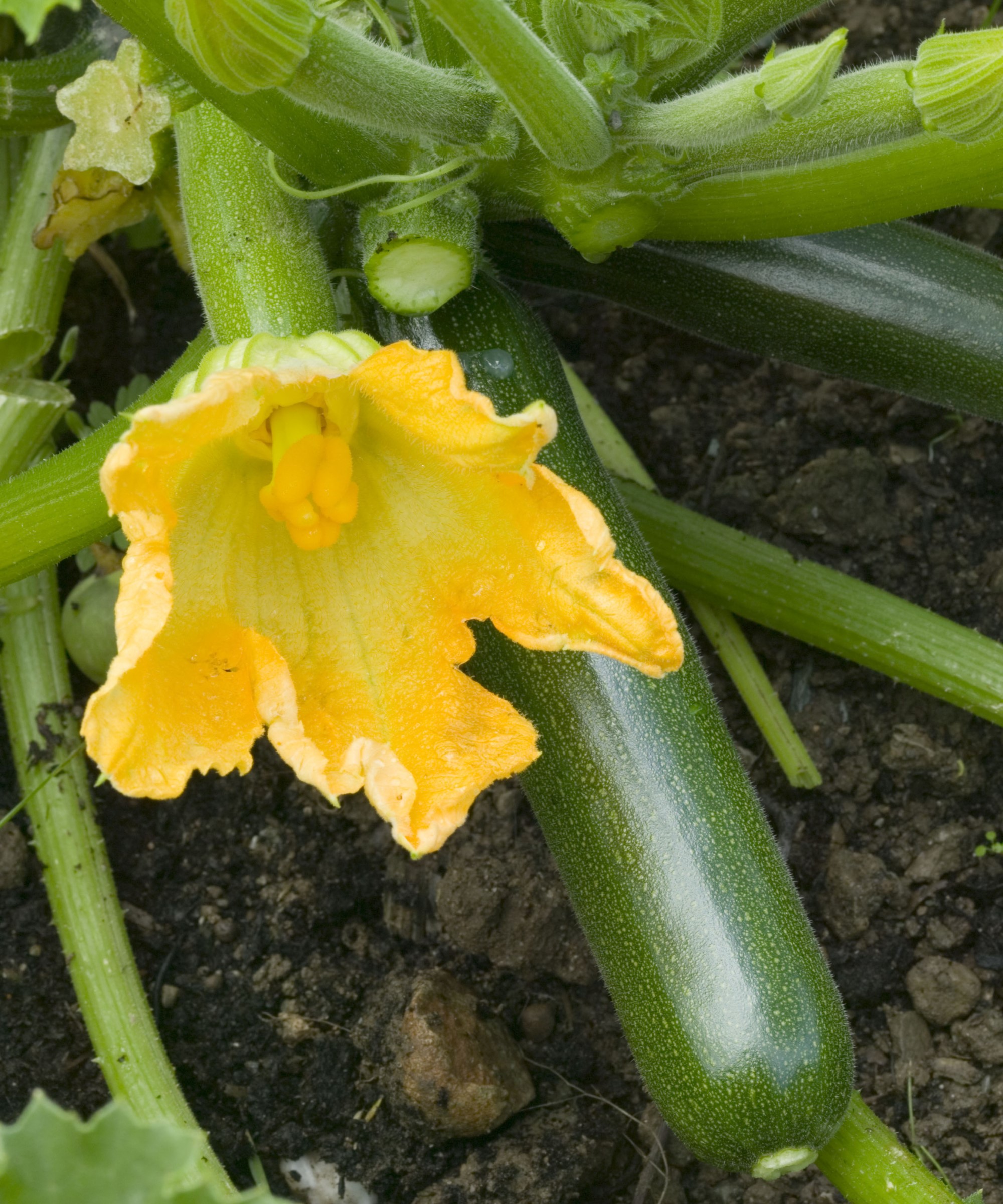
As well as requiring lots of moisture, zucchini also benefit from regular fertilizing when growing in containers. The hungry plants can use up the nutrients in the soil, so the addition of extra nutrients by adding feed keeps plants growing strongly and producing fruits to harvest.
Adding a handful of balanced 10-10-10 slow-release fertilizer, such as this all-purpose fertilizer available at Walmart, to the potting soil can get plants off to a strong start. When the zucchini plants start developing flowers, start to feed regularly with a fertilizer high in phosphorus. A feed every 10-14 days will give plants the nutrients to bloom and set fruit. The ideal type of fertilizer to use would be a liquid feed for growing tomatoes or a homemade comfrey fertilizer.
A liquid plant fertilizer designed to increases the vigor and volume of tomatoes and vegetables, whether growing in the ground or in containers.
6. Harvest regularly
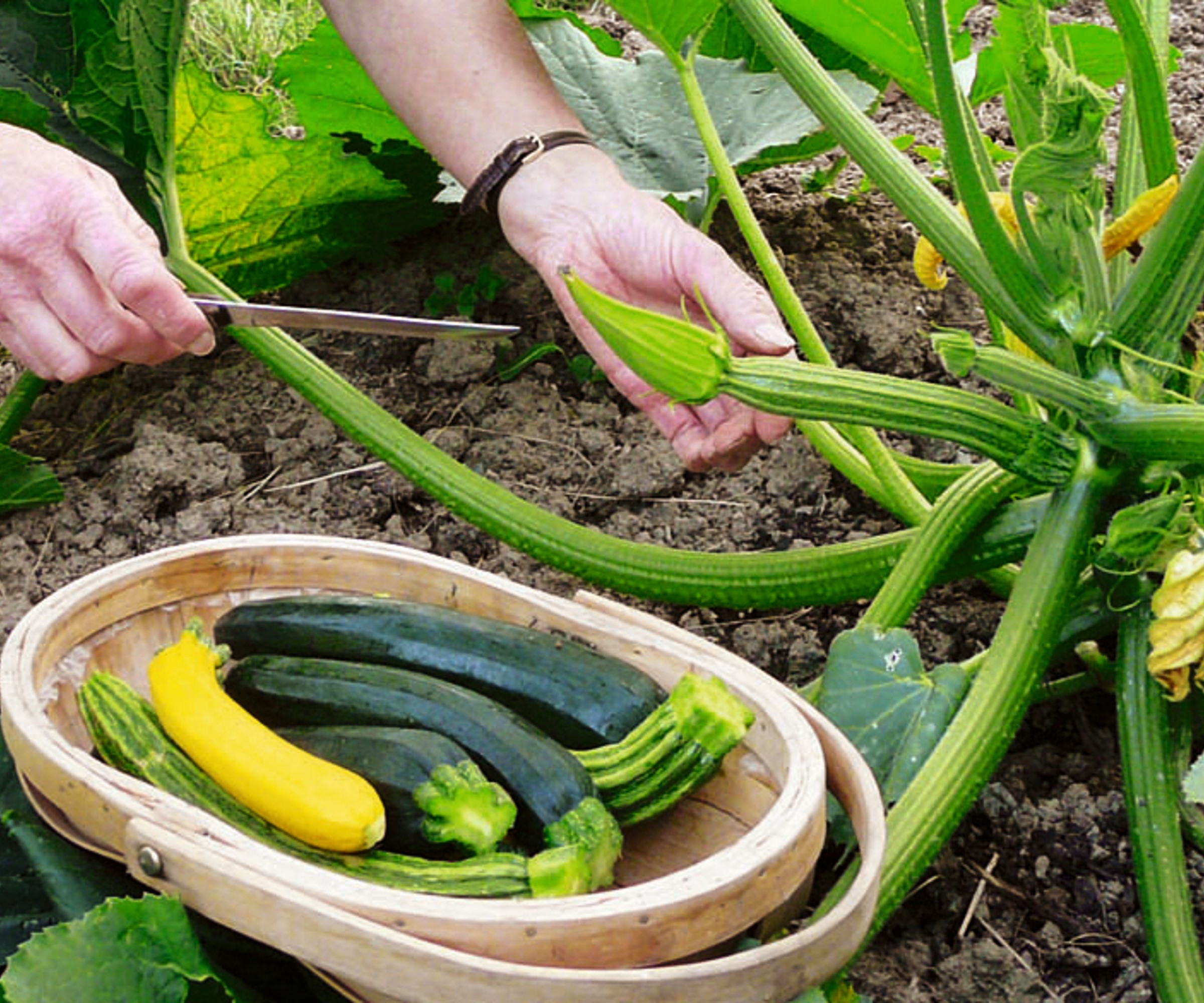
Harvest zucchini regularly when they reach a usable size and remember you can also harvest zucchini flowers as they are edible.
Regularly picking fruits with sharp and clean pruning shears or a harvesting knife, will encourage the plant to produce more zucchini and give you the biggest harvest.
FAQs
Can you grow zucchini in buckets?
Zucchini can be grown in 5 or 10-gallon buckets, providing drainage holes have been made in the bottom. A 5-gallon bucket, such as this bucket on Amazon, tends to be 14-16 inches tall and can hold around 40 pounds of soil. This can be large enough to hold one zucchini plant. Other crops can be grown in such containers too, for example, you can grow tomatoes in a bucket and grow potatoes in buckets. Utilizing household items such as buckets for growing can be great for urban growing in a small space, such as on a deck or balcony.
How far apart should I plant zucchini in a raised bed?
Zucchini are an ideal plant to grow in raised garden beds. If you intend to grow the crop in raised beds, zucchini plants want to be spaced 2-3 feet apart - depending on the variety. Any raised bed or planter box ideally needs to be at least 16 inches deep to grow zucchini plants.
The good news is that zucchini companion planting is still possible when growing the crop in containers. Placing pots of beneficial herbs, such as dill or lavender, or flowers, including nasturtiums and sweet alyssum, nearby can repel squash beetles and flea beetles while also attracting bees to pollinate your plants.







